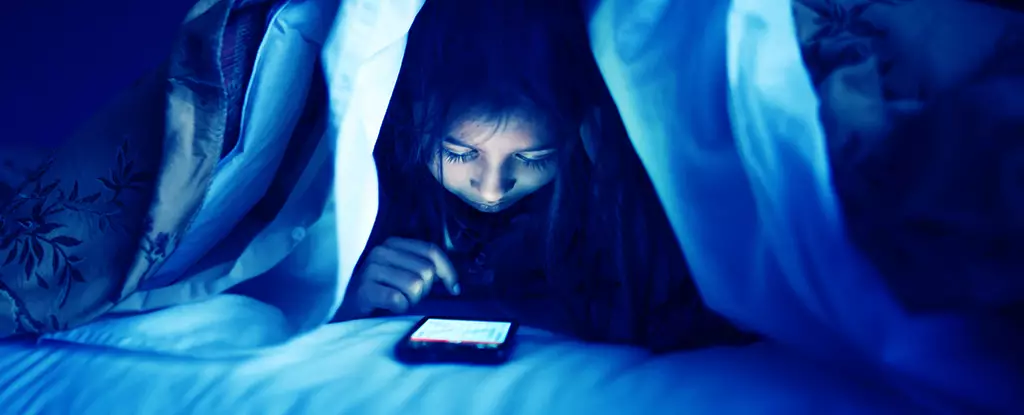When we open our curtains and let the sunlight into our rooms, we are not just allowing light to illuminate our surroundings. We are also triggering a series of chemical reactions within our bodies that regulate our biology and keep our internal clock in sync with the natural cycles of day and night. The specific range of wavelengths in daylight, often perceived as blue, activates a type of sensory cell in the back of our eyes called intrinsically photosensitive retinal ganglion cells (ipRGCs). These cells send signals to our brain, informing it that morning has arrived and it’s time to reset our body’s internal clock.
The Role of Cone Cells and their Interaction with ipRGCs
While ipRGCs do not directly contribute to our perception of color, they do receive information from the nearby cone cells, which are responsible for our color vision. This raises an interesting question: Can the cones, and consequently the light color, also influence our internal clock? To explore this query, a team of researchers from the University of Basel and the Max Planck Institute for Biological Cybernetics conducted a study to investigate the potential effects of perceived colors on our daily biological rhythm.
Current scientific wisdom advises us to avoid devices that emit a significant amount of blue light, such as smartphones, computer monitors, and tablets, particularly during the evening hours when we should be preparing for rest. The rationale behind this recommendation lies in the fact that ipRGCs in our eyes respond to short wavelengths of electromagnetic radiation, specifically wavelengths around 490 nanometers. If only this wavelength were available, our short-wavelength-sensitive cones would be activated while the long-and-medium cones would remain relatively inactive. This would lead our brain to interpret everything as a shade of blue, indicating that it is still daytime. Consequently, exposure to blue light during the evening can disrupt our natural sleep patterns.
Challenging Assumptions
Despite the well-established knowledge about the impact of blue light on our sleep, the lead researcher of the study, Christine Blume, suspected that there might be more to the phenomenon. Previous research in mice suggested that yellowish light might have a stronger influence on the internal clock than bluish light. Blume and her team wanted to investigate whether the way cone cells perceive a range of wavelengths could have an impact on the function of blue-triggered ipRGCs.
The Experiment
In their experiment, the researchers recruited eight healthy adult men and eight women. These participants underwent a 23-day-long study, during which they maintained a consistent bedtime for a week to habituate themselves to a specific sleep routine. Then, they visited a lab where they were exposed to three different types of light: a constant controlled “white” glow, bright yellow light, and dim blue light. Each light condition was experienced for one hour in the evening, leading up to the participants’ typical bedtime. Throughout this period, the researchers measured various indicators, including brain waves, heart rates, and salivary hormone levels.
Contrary to their expectations, the analysis of the data did not reveal any indications that the perceived color of the light affected the duration or quality of the participants’ sleep patterns. However, all three light conditions caused a delay in their sleep, suggesting that light in general has a more complex impact on our bodies than previously thought.
The Influence of Light Characteristics
While the study did not provide evidence that the perceived color of the light directly affects our sleep, it did suggest that certain characteristics of light can disrupt our sleep. For example, white light that contains a significant amount of blue wavelengths but stimulates our cone cells to perceive yellows, reds, or purples could still affect our sleep cycles. On the other hand, light that appears blue but lacks the intensity to activate the ipRGCs might have minimal influence on our daily rhythms.
The Future of Light Technology
The findings of this study have significant implications for how we approach lighting technologies. In the future, it may be possible to develop devices that allow us to switch into a night mode, which reduces the short-wavelength proportions of the light without altering the perceived color temperature. However, this technology is not yet implemented in commercial mobile phone displays.
Understanding the impact of light on our biological rhythm is crucial for maintaining healthy sleep patterns. While blue light has been considered the primary culprit for sleep disruption, this study suggests that the relationship between light color and our internal clock is more complex than previously thought. By further exploring the interplay between cone cells, ipRGCs, and various light characteristics, we can develop strategies to minimize the negative effects of light exposure during evening hours and promote better sleep hygiene.



Leave a Reply